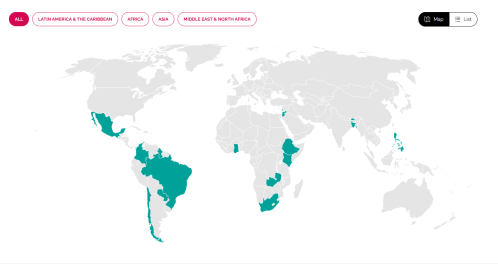Over the past decade, businesses and research institutions that produce new discoveries and bring new products to market have, increasingly, moved into urban areas. This new geography of innovation, as I and my colleagues at the Brookings Institution call it, is coinciding with and benefitting from young workers shifting their residential preferences and revaluing city life.
The implications of this trend have been well reported—from where jobs are located, to what kinds of housing are built, to how the benefits can be shared broadly within communities. Less reported is the impact that colleges and universities could have on America’s cities, as they look to these areas to draw new ideas and talent.
Over the past decade, a number of universities—Brown, Cornell, the University of California, the University of Washington, Duke University, Arizona State University, just to name a few—have gotten ahead of the curve, un-anchoring from their traditional campuses and expanding into the cores of cities.
Smart university presidents should follow suit.
This is not to say that whole undergraduate institutions should uproot and plant their flags to the closest city. Rather, these leaders need to rethink where they locate their specialized graduate schools and high-value research assets—moving them from relatively remote locations into places where they can both leverage an existing ecosystem and revitalize growth.
Whether the University of California San Francisco moving a biotechnology campus into the heart of Mission Bay in 2003, University of Washington’s medical research hub to Seattle’s South Lake Union in 2005, Brown University’s downtown Providence medical school in 2011, or Duke’s Clinical Research Institute in Downtown Durham in 2013, it’s clear that university presidents are beginning to value the allure of the urban campus for certain R&D functions, both to attract the right talent and to turbocharge research.
Some schools are even looking beyond their own metro area—sometimes finding the right ecosystem means locating in a different city. As a Cornell professor Ronald Ehrenberg said about their isolated Ithaca, N.Y. campus, “It is very, very difficult for us to do the kind of development here through tech transfer that a place like Stanford or Berkeley can do in San Francisco or Harvard or MIT can do in Boston.” To be a major player in the tech industry, Cornell had to think about location, and they hope a new engineering campus in New York City (set to open in 2017) will be the solution.
The un-anchoring of these anchor institutions says a lot about universities’ desires to create relationships with local industries and community development. This is true even for those institutions already in cities but which have not always valued their location and, in times past, could be as gated as a secluded rural school.
In many ways, community colleges are actually ahead of the curve, as two-year and technical training programs are building strong ties with businesses, giving students hands on training while in school and a path to sub-baccalaureate jobs in fields such as manufacturing and the health sciences. One such example is the Baltimore City Community College Life Sciences Institute, which in 2009 relocated to the University of Maryland BioPark, a large-scale biotechnology research development near downtown Baltimore. The proximity to active research promises students good jobs “just an elevator ride away.”
The urbanization of higher-ed also has the potential to mitigate the impact of brain drain, where, post-graduation, students simply pick up and leave. University programs that connect to regional industry ecosystems are more likely to leave their students with strong local professional networks, providing them with increased opportunity without needing to search elsewhere. At the same time, changing demographic preferences have made it clear that highly educated graduates prefer to live in cities and urban environments, so locating in one offers a stronger chance that alumni remain post-graduation.
As they pursue relocations and expansions, universities are also increasingly financing and delivering some of the largest-scale redevelopment projects in our cities—a role that was explored in depth by a recent report by the University of Pennsylvania’s Institute on Urban Research. When done right, these projects can leverage catalytic public investments to remake whole swaths of the urban landscape. West Philadelphia’s University City is a perfect case study. Beginning with Penn’s West Philadelphia Initiative in the mid-1990’s and continuing through Drexel’s nascent Innovation Neighborhood plan, the rejuvenation of University City is largely thanks to its anchors, with community benefits including new commercial and retail development, supplemented municipal services, and even anchor-supported K to 8 charter schools.
Our cities are in the midst of being remade. In the process, we can’t lose sight of the multiplier effects of bringing our most advanced institutions into the heart of cities, where they can provide the broadest return on investments for the whole region. University leaders must rethink their institutions’ relationship with place, being more purposeful both in the locations of their research assets and their impact on their communities. Governors need to think about how to maximize the value of their state university systems and component parts. And urban developers should be thinking not just about mixed-use office, retail and housing, but about building specialized lab facilities and collaborative spaces near universities to realize the full potential of the innovation economy, which looks to institutions, entrepreneurs and technological change to advance growth.
At a time when people and their businesses are revaluing location and proximity, universities cannot remain bound by the location decisions of the 19th and 20th century. As the knowledge economy evolves, so too should the location of institutions dedicated to knowledge.
This commentary was originally published by
Fortune
.



Commentary
Op-edHow Universities Can Renew America’s Cities
November 3, 2014